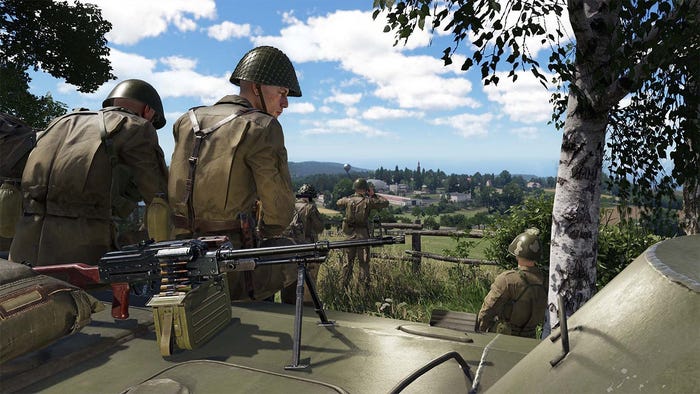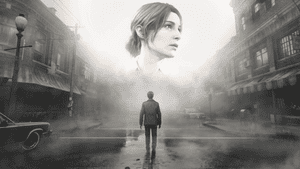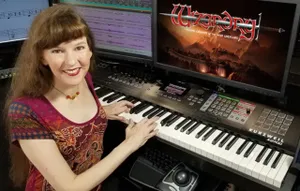How just letting kids be kids drives the design of Pok Pok Playroom
Pok Pok Playroom is the first video game that some parents are introducing to their kids. Here's what kind of design theory fuels this interactive toybox.

When you're talking about making games for children, it's often a bit of a moving target. For starters, children at different development stages have entirely different needs and understanding in how they play. Then, there's the fact that your players will probably age out of your game within the span of a year or two—sometimes less!
And that's before you consider how many kids start jumping into games aimed at older players before they've hit the age of 10. Minecraft, Fortnite, and Roblox all were built with older players in mind, but have exploded in popularity thanks to their popularity with kids.
It's a dizzying field, one that's changed and evolved dramatically since the educational games of the '90s to the proliferation of kid-oriented games now available on mobile devices.
To get a snapshot of what kinds of problems developers in this world are trying to solve, we got in touch with the team behind Pok Pok Playroom—a digital toybox for kids age 2-6 made for the iOS App Store that took home Apple's 2021 Design Award—to ask how they're connecting with kids and introducing them to the world of video games.
Making games for their own kids
Pok Pok Playroom began as the brainchild of Mathijs Demaeght and Pok Pok creative director/co-founder Esther Huybreghts. They're a husband-and-wife game development duo who were looking for a new form of screen time for their two-year-old son. They needed something interactive that didn't have levels (he didn't know what a level was), with few menus (he couldn't read!), and that he could use with little parental assistance.
They couldn't find any games like that—so they got to work on making their own. Demaeght was working as an artist at Alto's Oddysey developer Snowman, and both he and Huybreghts are classically trained animators.
The first prototype was kind of a digital animated storybook without the story, like the kinds of books with tactile tabs and physical objects that teach kids about interaction, touch, or sound. The pair took it to Snowman's leadership—Ryan Cash and Jordan Rosenberg—and began to talk about expanding it as a mobile app.
When Pok Pok CEO and co-founder Melissa Cash (a veteran designer of baby and toddler products who spent time at Disney before joining her brother at Snowman) crossed paths with Huybreghts and Demaeght, lightning struck, and everyone involved decided this app needed its own company to support it.
"We realized that something we're really passionate about is creative learning and creative thinking," Cash explained to Game Developer. "And we're also the generation that grew up with technology. But our first screens were the TV, not a tablet or phone."
"We sort of realized this digital storybook Esther had started could be a lot more than that."

Huybreghts (left) and Cash (right) during a pre-COVID design session
Before Pok Pok even landed its own company, Cash had flown out to Belgium to spend time with Huybreghts' and Demaeght's kids. It proved to be the design formula that would shape the app's future—putting Pok Pok Playroom in the hands of kids helps its creators understand what the game actually is.
Take the Busy Board (which debuts some new playful objects today as part of the app's monthly free updates). It's like a real busy board: a collection of doodads and interactable objects that entertain toddlers by giving them objects to "do" things with. In Pok Pok Playroom's Busy Board, kids can interact with digital versions of these objects. Some of the new ones double as an introduction to concepts like magnetism, electricity, and gravity for older players.
A physical Busy Board can only do what an object is physically designed to do, but in the digital space, they can do a lot more than that. Huybreghts explained that the Pok Pok team wanted the app to evolve with kids, so that a two-year-old who enjoys the Busy Board's new plasma globe can do more experimenting with how the object's simulated electricity works as they begin to understand…well, what electricity even is.
"As kids dive deeper into playing, they'll be rewarded with more play and more opportunities and things to discover," Huybreghts explained. "There are no reward systems because it's open-ended. There's no flashing 'congratulations' when you reach some goal."
That's a big difference from other kinds of kid's games from throughout the relatively short history of game development, Cash pointed out. A lot of games "for" kids will feature conventional game design mechanics—levels, combat, traversal—just scaled down in difficulty and with a cartoonish aesthetic. The hope is that apps like Pok Pok have more lasting power because they're closer to physical toys than a game that ends as soon as a challenge is completed.
Huybreghts made a comparison with LEGO bricks—two-year-olds just bash them about, connect a few, or knock them over, but those bricks have staying power because as a child ages, they can use them to build structures or assemble them into storytelling tools.
"A huge part of our experiment during playtesting (which ran three years before Pok Pok Playroom landed on the iOS App Store) was to make sure it doesn't become something that a parent has to delete off their device and consider a waste of money because their kid only played with it for two weeks," Cash said.
What do kids actually want to do in games, anyway?
Making digital objects with deep mechanics that might not be uncovered for years demands a lot of work. And when asked how the team makes them without over-or-under-thinking the objects, Huybreghts laughed and deadpanned that "over-scoping is one of our issues."
"Whenever we kick off a brainstorm for a new toy or update to an existing toy, we always have to scope down because we are dreaming big constantly. It's a very fun challenge to try and think [like] kids do."
Cash apparently regularly points out to the team that when they're playtesting Pok Pok Playroom, "the kids are the smartest people in the room." A game designer has a good sense of what feels fun for other adults, but only under what Huybreghts called "internalized schemas and structures" of play and fun.
Kids don't have those structures, and are operating on a much wider field of creativity which Cash pointed out is a good reason for Pok Pok Playroom's objects to all be physically based on real-world objects and environments. While some elements like a drawing app or a sound toy are a bit more abstract, Cash said the team deliberately used objects in kids' worlds, because kids "find so much excitement, joy, simulation, and interest in the day-to-day."
And that design direction is another thing Cash said is missing from the space of games for kids. Lots of games will feature talking animals that are friends with each other, or bring in fantastic or sci-fi elements (even The Muppets or Frozen-inspired games might be guilty of this). "Most toddlers don't get to make very many choices on their own," Cash said. "Having that agency is a really critical part of developing creative thinking skills."
The little discoveries that kids make in their lives (Cash pantomimed a toddler picking up a book and telling their parent "look what I found") can make a great foundation for all the different toys of Pok Pok. It's also provided some really wild insight during playtesting with actual kid users. "Kids never go play with a toy the same way," she said. "It's very rare."
"Most parents frankly are confused. They look at toys in Pok Pok and go 'what's the point of this?' But as soon as you put it in front of a child, they show you how it's done."
Huybreghts said this was part of the motivation for not including any kind of tutorial. Since kids know what kind of fun they're looking for, they can just start interacting with objects and make their own decisions—finding that sense of agency that Cash described.
Cash did point out there was one adult-minded concept implemented in Pok Pok Playhouse that didn't really come from kid players. the game does show some illustrations of real-world environments in areas like its "Town" and "House" play modes, and part of making those environments feel "real" meant filling them with diverse casts of characters.
.jpg/?width=700&auto=webp&quality=80&disable=upscale)
Pok Pok Playroom's "House" toy.
"We really wanted to take the opportunity to highlight what's really important to us and for the next generation," Cash said, "which is seeing families of all abilities, genders, family constructs, races, coexisting in a beautiful way."
For many young Pok Pok players, that means the game shows real, evolving objects in world that probably looks like the one they're growing up with—which doesn't feature too many talking animals.
Hearing Huybreghts and Cash describe their work felt unusually similar to what's been said by the developers behind games like Dishonored, or seen through Nintendo's evolution of the Legend of Zelda series with Breath of the Wild. Both games use more open-ended mechanics to sell more agency in the world of a fantasy adventure, but it's fascinating to learn that the same lanes of thinking are working for kids too.
Thankfully kids don't need Dishonored's Mark of the Outsider to make their own adventure—they can find it all just by banging on a Busy Board and seeing what comes out.
Read more about:
FeaturesAbout the Author
You May Also Like









